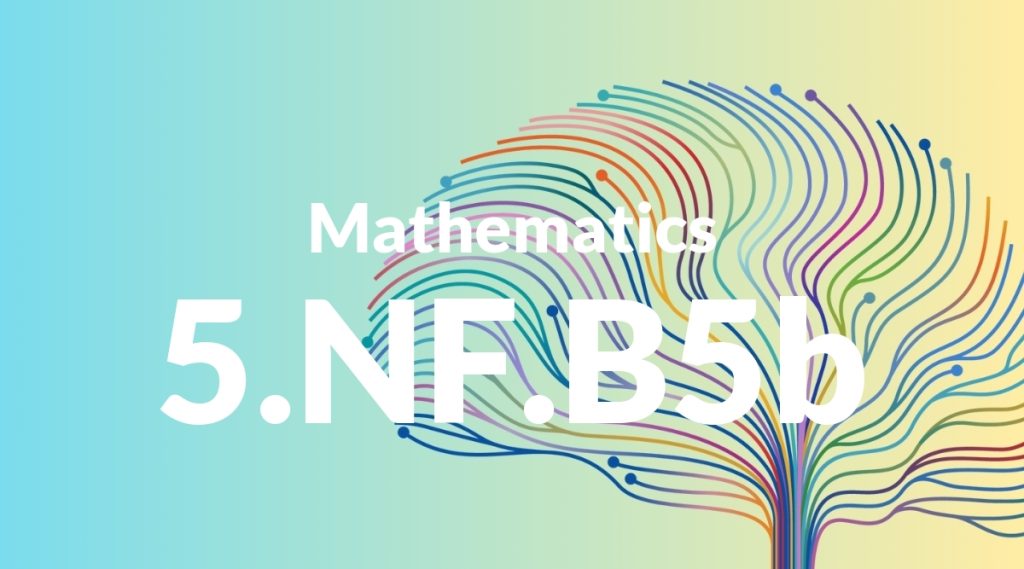Standard: 5.NF.B5b – Explaining why multiplying a given number by a fraction greater than 1 results in a product greater than the given number (recognizing multiplication by whole numbers greater than 1 as a familiar case); explaining why multiplying a given number by a fraction less than 1 results in a product smaller than the given number; and relating the principle of fraction equivalence a/b = (n × a)/(n × b) to the effect of multiplying a/b by 1.
Grade level: Grade 5
Subject: Mathematics
Domain: Numbers & Operations – Fractions
Teacher Overview
This standard focuses on helping students understand the effects of multiplying fractions by whole numbers and other fractions. It is crucial for developing a deep understanding of how fractions work in various mathematical operations and real-world contexts. Students should be comfortable with basic multiplication, division, and fraction concepts, including comparing and simplifying fractions.
Students will be prepared to tackle more complex fraction problems, including dividing fractions and working with mixed numbers, applying their knowledge to real-world scenarios.
Common Misconception 1
A common misconception is that multiplying always increases the product. This is incorrect because multiplying by a fraction less than 1 actually decreases the product.
Intervention 1
Use visual aids such as fraction strips or number lines to demonstrate how multiplying by fractions less than 1 results in a smaller product.
Common Misconception 2
Another misconception is confusing fraction multiplication with fraction addition. Students might incorrectly add the numerators and denominators.
Intervention 2
Provide clear, step-by-step examples that highlight the differences between fraction multiplication and addition, using visual aids to reinforce the concepts.
Prerequisite Knowledge
Students should have a solid understanding of basic multiplication and division, the concept of fractions as parts of a whole, and the ability to compare and simplify fractions.
Subsequent Knowledge
After mastering this standard, students will be able to apply their understanding of fractions to more complex problems, including dividing fractions, working with mixed numbers, and solving real-world problems involving fractions.
Instructional Activities
- Use fraction strips to demonstrate multiplication of fractions.
- Create word problems that involve multiplying fractions by whole numbers.
- Conduct cooking or baking activities that require doubling or halving recipes.
- Use visual aids like number lines to show the effects of multiplying by fractions greater or less than 1.
- Incorporate technology, such as interactive fraction games, to reinforce concepts.




